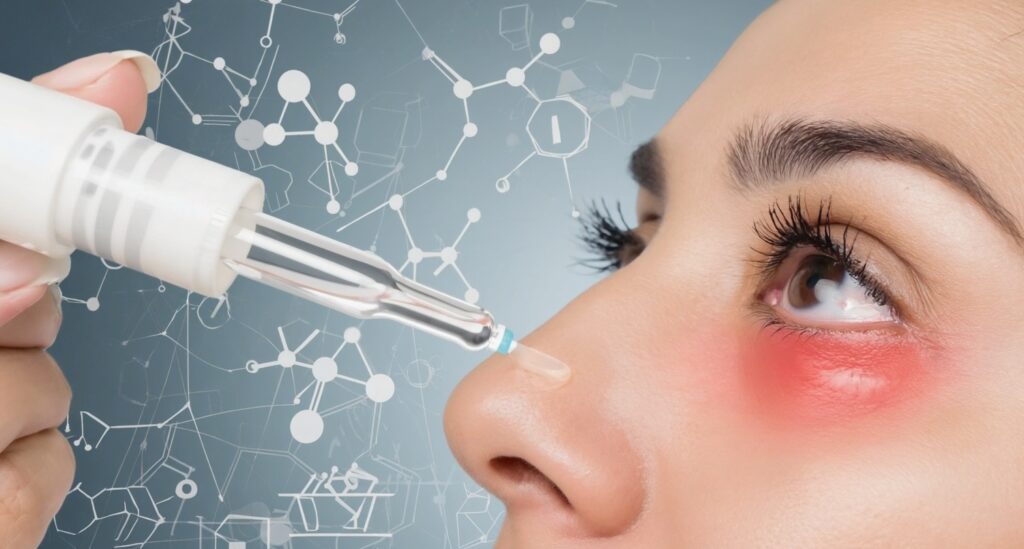Understanding the Deeper Causes of Persistent Dry Eye
Chronic dry eye is more than just an irritating symptom. In many cases, it’s a sign of an underlying autoimmune condition—especially Sjögren’s syndrome. In this article, we explore how chronic illnesses like Sjögren’s affect the eyes, what treatments are available, and why early diagnosis is key.
What Is Sjögren’s Syndrome?
Sjögren’s syndrome is a chronic autoimmune disease where the body’s immune system attacks its own moisture-producing glands—primarily the tear and saliva glands. The result? Constant dryness in the eyes and mouth.
Who Is at Risk?
This condition is more common in women over the age of 40 and is often associated with other autoimmune diseases like lupus or rheumatoid arthritis.
Common Symptoms:
- Burning or excessively watery eyes
- Difficulty swallowing
- Chronic fatigue
- Joint pain
Other Chronic Conditions That Can Cause Dry Eyes
Sjögren’s isn’t the only culprit. Diseases such as lupus, thyroid disorders, diabetes, and rheumatoid arthritis can also interfere with the body’s tear production. Recurrent inflammation caused by autoimmune diseases may even increase the risk of keratoconus, especially when chronic eye irritation is present.
The Impact of Chronic Dry Eye on Vision and Quality of Life
Persistent dry eye is not just uncomfortable—it can damage the cornea, impair vision, and increase light sensitivity. Left untreated, it may lead to corneal wounds or long-term visual complications. Advanced solutions like custom-fitted scleral lenses can provide continuous moisture and protective coverage, significantly enhancing comfort and vision.
Accurate Diagnosis – Why It Matters
At M’Eye Clinic, diagnosis includes a combination of advanced tests:
- Tear quality analysis
- Evaporation rate measurement
- Imaging of tear glands
- Corneal mapping to detect subtle structural changes
This thorough approach is especially critical for patients with underlying autoimmune conditions. While we don’t diagnose systemic autoimmune diseases (only a certified physician can), our clinic focuses on accurately diagnosing and treating dry eyes, including those associated with chronic illnesses.
When Should You Get Evaluated?
If you experience one or more of the following:
- Burning eyes
- Gritty or foreign body sensation
- Worsening dryness in the afternoon
- Difficulty reading for extended periods
…it’s time to consider whether you’re experiencing chronic dry eye symptoms. This condition requires a specialized approach and long-term care strategy.
Advanced Solutions for Chronic Dry Eyes
Moisturizing Eye Drops and Tear Substitutes
These are often the first line of defense, especially in mild cases. Anti-inflammatory prescription drops may also be used when needed.
Custom Scleral Lenses
For patients with severe dryness, scleral lenses protect the cornea and create a liquid reservoir over the eye’s surface. When fitted properly by a keratoconus specialist, these lenses offer not just comfort—but improved vision as well.
EyePrintPro Technology
Patients with severe corneal irregularities or sensitivity to standard lenses may benefit from EyePrintPro—a fully custom lens printed based on a 3D impression of your eye’s surface. Available exclusively at M’Eye Clinic, this option offers a unique “no-feel” fit, ideal for chronic dry eye sufferers who need maximum comfort and stability.
Frequently Asked Questions
Does chronic dry eye get worse over time?
Yes, if left untreated. It can lead to corneal damage and discomfort.
What’s the difference between regular and chronic dry eye?
Temporary dry eye is often caused by environmental factors like air conditioning or screen time. Chronic dry eye is persistent and usually stems from an underlying health condition.
Can chronic dry eye be cured?
While it typically requires ongoing management, most patients can achieve a high level of comfort and visual stability with the right treatment plan.
Are scleral lenses suitable for Sjögren’s syndrome?
Absolutely. Scleral lenses are one of the most effective options for patients with Sjögren’s, as they maintain a constant fluid layer between the lens and cornea. However, the lens must be 100% customized for each individual to ensure a comfortable, non-irritating fit.
Personalized Care for Patients in the Middle East
At M’Eye Clinic, we proudly serve patients from across the Middle East, offering advanced diagnostics and individualized treatment for even the most complex dry eye cases. Whether you’re dealing with Sjögren’s or another chronic condition, our team is here to help you reclaim your comfort and vision.
Explore long-term options for dry eyes treatment tailored to your condition and lifestyle.

